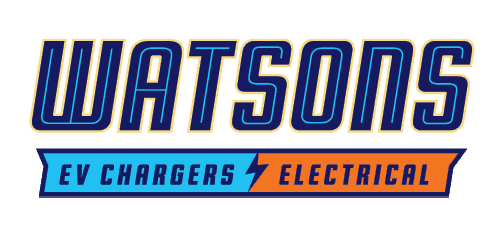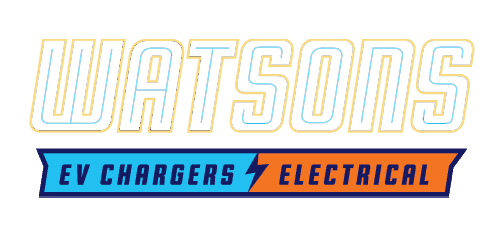Get the Most From Your Electric Vehicle Home Charger
Most families require two vehicles at home. The need for multiple cars is increasing, from getting to work to getting the kids to school to taking care of errands, appointments, and more. With almost 5% of newly registered vehicles in the U.S. being EVs (39% of new EV registrations are in California), there is evidence that many drivers will need an EV home charger solution for more than one electric vehicle.
Most EV owners seek electric vehicle charger installation at home. Home charging provides a more convenient and cost-effective way to keep your car running. Once a family brings home their second EV, they start wondering if a single electric vehicle home charger is enough to keep both cars running or if they need to find another option for charging an EV at home.
Read on to learn how to deal with having more than one EV at home.
Check Your Electric Panel First
Keep in mind that the age and make of your electric panel might not support an electric vehicle home charger, let alone the ability to charge multiple cars. In fact, some older model panels like Federal Pacific, Zinsco, and split-bus panels are generally unsafe in modern homes, let alone for the heavy demands of an electric vehicle home charger.
Even more modern electric panels might need upgrades, new lines run, or load management devices installed to support home EV charging. Make sure to check with a local electrician before making plans to add a charging station at home.
Ask your electrical contractor if a larger than standard breaker box is necessary. Homes with multiple EVs often look for electrical panels that can handle up to 400 amps.
Consider Local Load Management (LLC)
When you plug in an appliance at home, you expect it to run without forcing other electronics to turn off. This expectation is accurate for most typical appliances and electronics, but there is not an infinite amount of electricity in your home. Electric vehicle chargers require more electricity than your refrigerator or TV.
LLC allows you to use your existing electrical system to keep power flowing to multiple devices, including numerous charging stations. For example, you might have an electrical panel that provides 100 amps. You decide to install three electric vehicle chargers, each requiring 40 amps at full charging capacity. If each station worked simultaneously at full capacity, the electric panel could fail. With LLC, the various chargers communicate with each other to spread out the available power throughout the house without trying to draw more power than is available.
Load management systems, like the DDC-12 and DDC 9, perform real-time monitoring of your home’s total power consumption. These devices temporarily stop the charging station if the total power drawn exceeds 80%. The charging station can resume work when the total power consumption is less than 80% for more than 15 minutes.
Enhance Your Home with a Smart Electrical Panel
Smart panels can work with or replace your existing electrical panel. These panels are masters of load management and turn on/off EV chargers, electric heat pumps, dryers, water heaters, and other power hogs to ensure that you are not pulling too much power from your electrical grid at once.
In many cases, a smart panel can manage your power needs so well that you may not need to make any significant upgrade to your electrical grid. Smart panels can even reduce your electric costs by limiting power consumption during peak hours and working with your solar power energy storage system.
Upgrade to a Level 2 Electric Vehicle Home Charger
Most EVs come standard with a level 1 charger. This electric car home charger is essentially a cord that plugs into a standard 120v, three-pronged outlet on one end and your car on the other end. While this kind of EV home charger gets the job done, it is a slow process. Level 1 chargers add about five miles of driving range every hour on the charger. Other than plug-in hybrid vehicles (with an electric range of fewer than 40 miles), a Level 1 charger will not give you a full charge overnight. While you can charge both vehicles simultaneously with their standard chargers, this process is far from efficient.
Level 2 electric vehicle charging stations are specialized units that possess around 240 volts on a 40 amp circuit, with some variations. This kind of electric vehicle home charger adds 18-28 miles of range per hour, which can quickly and fully charge an EV’s battery overnight. Unlike a level 1 charger that simply plugs into any home outlet, you will need an electrician to handle your level 2 EV charger installation.
With a level 2 EV charger at home, you can easily alternate charging each vehicle on different days or prioritize charging to the car that needs it the most. You can still use the standard level 1 charger on the other vehicle.
Dual Socket Level 2 Chargers
If you don’t already have an electric vehicle home charger and expect to end up with more than one EV, it is worth looking at dual socket EV chargers. These charging stations allow you to plug in two vehicles at the same time.
One of the most significant benefits of a dual-socket EV charger is that it uses smart technology to split the charging based on each EV’s needs. This kind of charger is also easier to maintain and install than two separate units.
Dual Charging Stations
Homeowners adding a second EV might already have installed an electric vehicle home charger. Instead of replacing their existing unit, they might decide to add a second EV home charger. Running two charging stations simultaneously is a great way to meet the individual needs of each automobile. You can also place these chargers in different locations, which is ideal if both cars will not fit in your garage.
Of course, there are some considerations to keep in mind. Installing two chargers will require two separate circuits. A certified electrician will need to verify that your current electrical panel can handle the additional load and set up the second circuit. While this may seem like an involved project, the freedom provided by using two distinct chargers may be worth the work.
Load Management Chargers
Some electric vehicle home chargers use built-in load management systems and smart technology. The Wallbox, for example, can be controlled through a smartphone app. You can not only monitor and control the system from your phone but can schedule charging for times when electricity is the least expensive.
Tesla also offers power-sharing firmware that allows up to six Gen 3 Wall Connectors to share power and charge several vehicles simultaneously. The power is distributed across the Wall Connectors to manage the load and minimize charge time.
Find Your Personalized EV Home Charger Solution with Watson’s
Whether you are bringing home your second EV or planning to EV charging stations at your business or investment property, it is critical that you work with the right electrical contractor. At Watson’s Charging Stations & Electric, we can work with you to design the perfect system that can handle multiple EVs. From upgrading your electrical panel to installing your next EV home charger, our licensed and certified team is here for you.
If you are in the Gilroy, CA, or Santa Clara Valley area and have electrical needs, give Watson’s Charging Stations & Electric a call for a complimentary consultation today.


